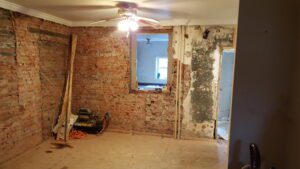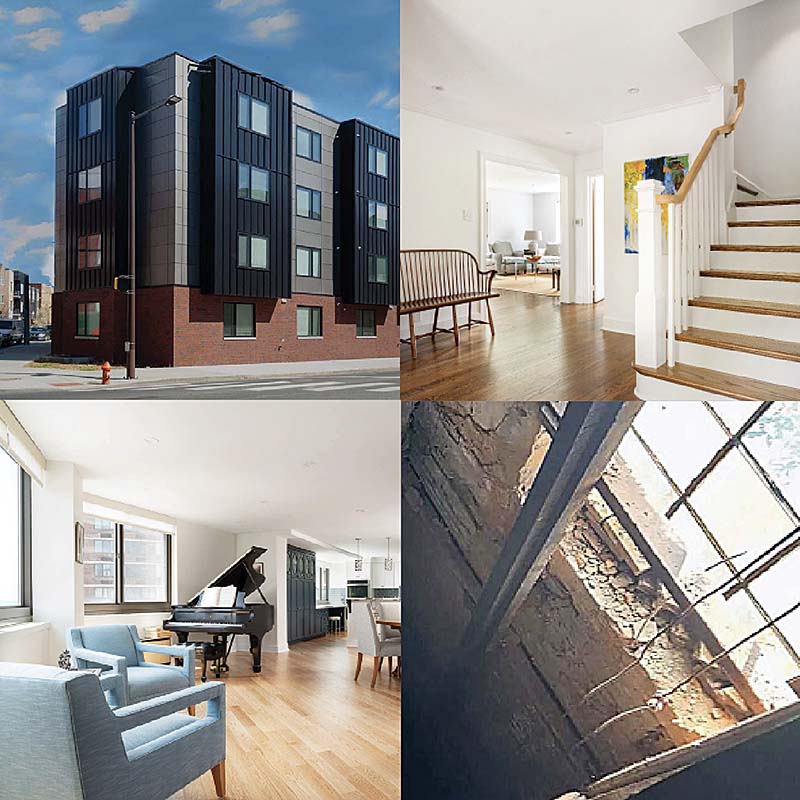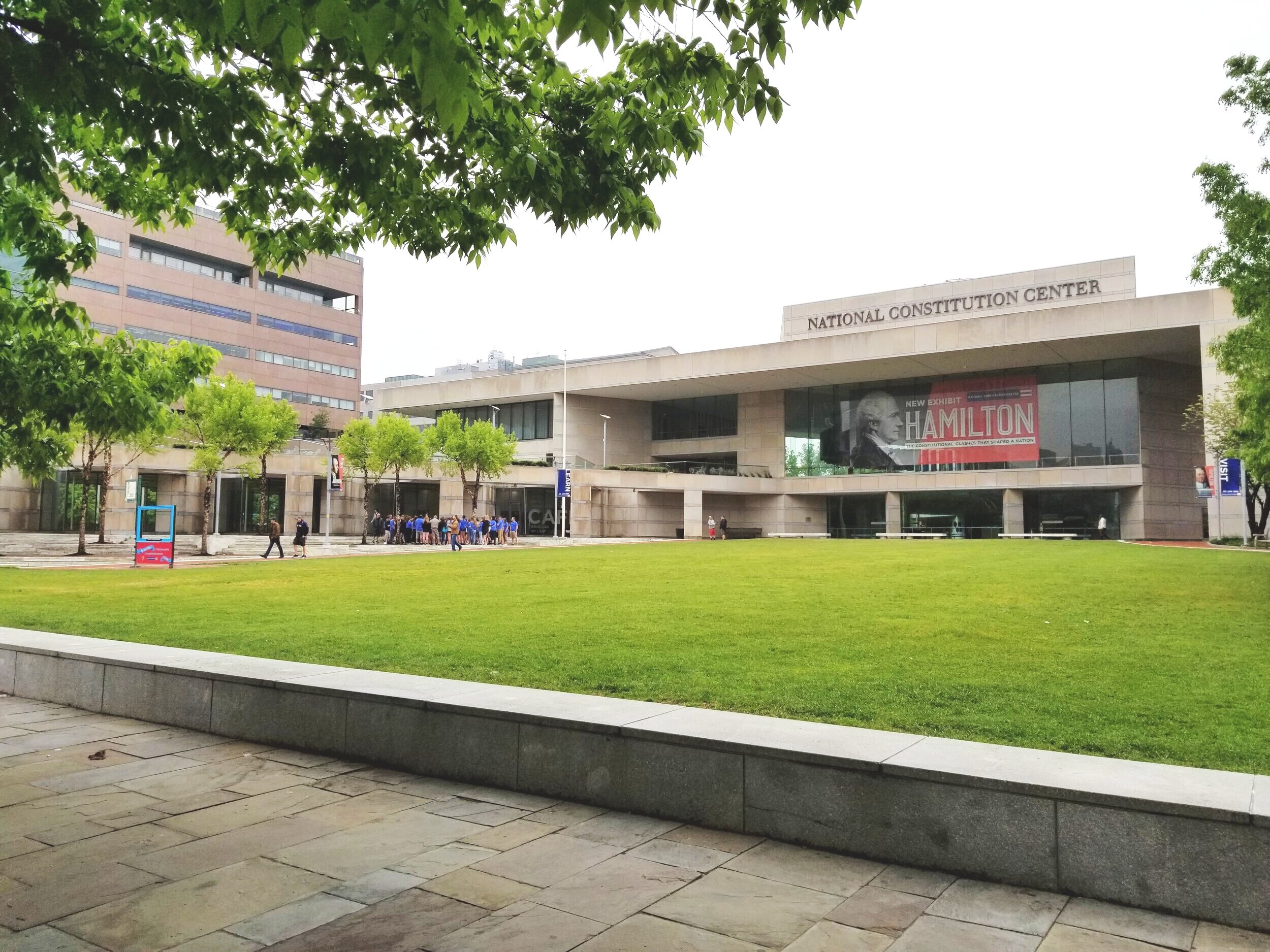Cut it Out!
Still Going.
In older Philly rowhomes, the bathroom plumbing was often accommodated by notching the floor structure. Here’s an example. Not only can you see the deep, ragged notch, but you can also see the water damage where the former bathtub drain leaked water into the wound.
This would never pass inspection today. A bathtub was here, so right where you’d want the most strength (400 lbs of water plus the bather) you have a weakened joist. And yet it still stands, 100 years later.
How is this possible? Partly, it’s because the wood used in older buildings was much denser than wood used today. The wood from back then was taken from natural forests, where trees grew at their own pace. Today, most wood comes from farms, where trees grow on an accelerated schedule (through fertilization and watering techniques), meaning they don’t have time to get as dense as they do now. Also, older homes in Philadelphia were often framed with hardwoods (chestnut, for example), while newer wood is softwood, like pine or fir. Hardwood is stiffer than softwood, so it could take more abuse.
Regardless, you wouldn’t see a notch like this today. If you do, call your architect!









